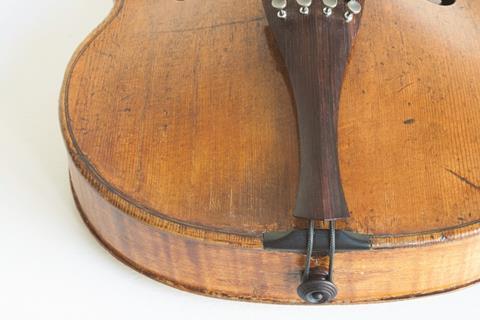
Using military-grade materials to improve set-up stability
Kevlar is familiar to most people as a material used inside bulletproof vests. According to German manufacturer Schilbach, however, this strength also makes Kevlar a useful component in the tailgut that fastens an instrument’s tailpiece to the button at the end of its body.
As its name suggests, tailgut was originally made from animal gut, a problematically elastic material that was replaced in the 20th century by nylon, steel and even parachute cord. ‘Most metals and plastics deform when subjected to long-term tensile forces,’ says Schilbach CEO Benjamin Schilbach. ‘This is a phenomenon called “creep” but Kevlar neither stretches under tension nor “creeps” over time. It offers the ultimate stability.
‘The tailgut comprises a Kevlar core concealed inside a sheath of braided black polyether sulphone, a plastic more durable than standard polycarbonates,’ continues Schilbach. ‘Some people find that the superior strength of the Kevlar improves the response time of the instrument or “tightens” how it feels under the bow, changes that can contribute to an intensification of sound. Many players feel that their instrument sounds fuller and more “open” with a Kevlar tailgut because of its effect on the way vibrations are damped and transmitted.’
Schilbach suggests that the use of Kevlar may also reap aesthetic rewards: ‘The tailgut has a classic appearance that blends effortlessly into the overall ensemble of the violin or cello, while the strength of the core ensures a clean silhouette against the body of the instrument.’ Schilbach recommends that the tailgut should be held securely in place using a figure-of-eight or water knot, although a straightforward fisherman’s knot works too.
Schilbach Kevlar tailgut from €2.45 email atelier@schilbach.net web www.shop-schilbach.net










































No comments yet